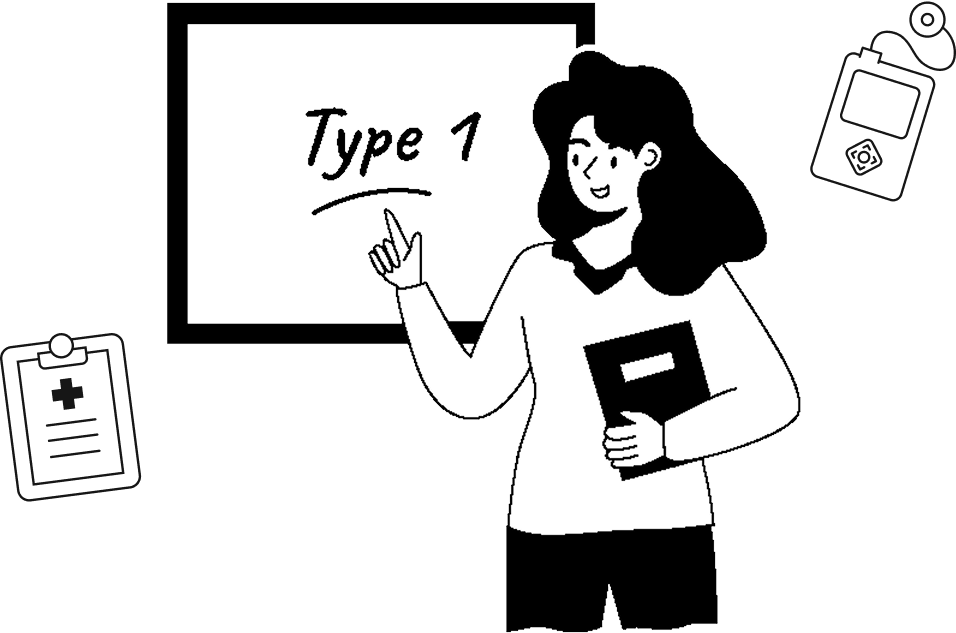Living with type 1 diabetes (T1D) or having a child with T1D is a daily challenge. Beyond medical considerations, another essential aspect that’s often overlooked: the choice of words.
Various articles published by Diabetes Canada, the American Diabetes Association (ADA) and the American Association of Diabetes Educators (AADE) highlight how words used to talk about diabetes impact the lives of those affected. They offer practical recommendations for healthcare professionals, people concerned by diabetes, their peers and the general public, highlighting how important word choice is.
The power of words
Language is more than just a vehicle for communicating our ideas: it’s also a powerful tool that can shape the way we think of and perceive the world. Words with neutral or positive connotations promote a respectful and understanding environment, while negative words might reinforce unfounded judgments and stereotypes. This is also the case with diabetes.
Certain terms can be perceived as stigmatizing or negative. This can have a significant impact on people with T1D’s mental well-being, making them feel powerless or guilty in the face of some of the challenges they face with the disease. For example, words such as “uncontrolled,” “diabetic” or “non-compliant” can carry stereotypes and drive a negative view of those living with diabetes.
A growing number of studies show that many people with T1D, and sometimes their loved ones (e.g., parents) face stigma associated with diabetes. Stigma often fosters feelings of guilt, shame or blame and lead to isolation, which in turn can cause psychological distress, discourage people from taking care of their health, and affect quality of life.
Change begins with words
The words we use play an important role in how diabetes is perceived and experienced. Prioritizing words that highlight strengths and drive respect, inclusion and hope can have a real impact on the lives of people with diabetes. Here are some practical tips to improve the way we talk about diabetes.
1. Use neutral, factual language
When talking about diabetes, neutral language based on facts, actions or physiology/biology should prevail. For instance, the word “control”, often used in the context of care, suggests that a person with diabetes has total control over their blood sugar levels, which is not the case. A word such as “management” better reflects the complexity of diabetes as it acknowledges that there are factors over which people with T1D have no control, such as socio-economic, genetic and environmental factors, just to name a few.
2. Use language that highlights strengths
Studies show that negative or demeaning language can contribute to diabetes-related distress, impact diabetes management and even affect longer-term health (e.g., glycemic sugar balance over the recent months). Those involved in the care (e.g., loved ones, healthcare professionals) of people with T1D are encouraged to focus on the successes and to recognize their abilities and strengths rather than focusing only on what doesn’t work.
3. Promote collaboration
Some common attitudes or expressions are both harsh and patronizing. and make people with T1D feel scrutinized and reprimanded. Using an approach based on collaboration (e.g., healthcare professionals, parents) and respect is essential for building trust.
4. Use language that focuses on the person
Considering each person as a whole and recognizing the experience of individuals who manage their condition on a daily basis is essential. Their quality of life and overall well-being deserve just as much attention as the medical considerations. For instance, phrases such as “a person living with diabetes”, rather than “a diabetic”, indicate that the person is considered and recognized beyond their medical condition.
Concrete examples
To better understand how to apply these tips, here are some alternatives to terms with potentially negative connotations that will improve the way we talk about diabetes.
The words we use are important. Prioritizing inspiring, supporting and respectful language when talking about diabetes can really have an impact on how this disease is perceived. This can help reduce or even eliminate stigma and create an environment in which everyone can thrive, despite T1D.
References :
- Banasiak, Krista et al. (2020). Language Matters – A Diabetes Canada Consensus Statement. Canadian journal of diabetes 44(5): 370-373. doi:10.1016/j.jcjd.2020.05.008
- Dickinson, Jane K. et al. (2017). The Use of Language in Diabetes Care and Education. Diabetes Care 40(12): 1790-1799. doi:10.2337/dci17-0041
- Beyond type 1, LANGUAGE MATTERS + THE DIABETES COMMUNITY, consulted on December 7th 2023, https://beyondtype1.org/language-matters-the-diabetes-community/

Written by: Sarah Haag, R.N., B.Sc.
Reviewed by:
- Nathalie Kinnard, scientific writer and research assistant
- Rémi Rabasa-Lhoret, M.D., Ph.D.
- Amélie Roy-Fleming, P.DT, M.Sc.
- Michel Dostie, Claude Laforest, Marie-Christine Payette, Jacques Pelletier, patient partners of the BETTER project






